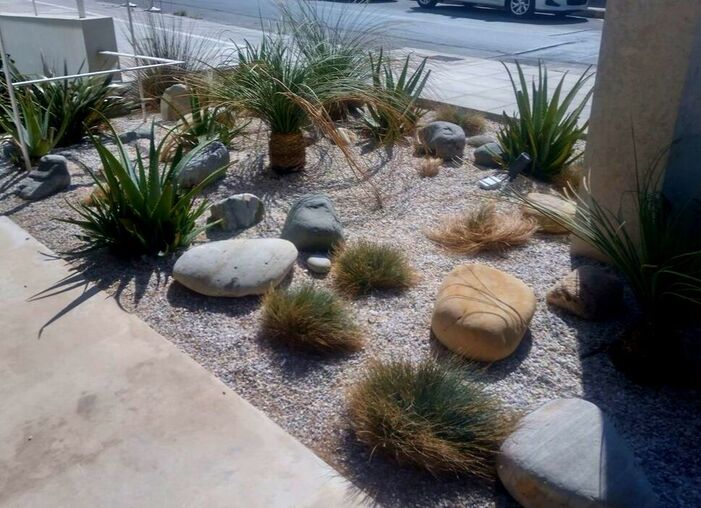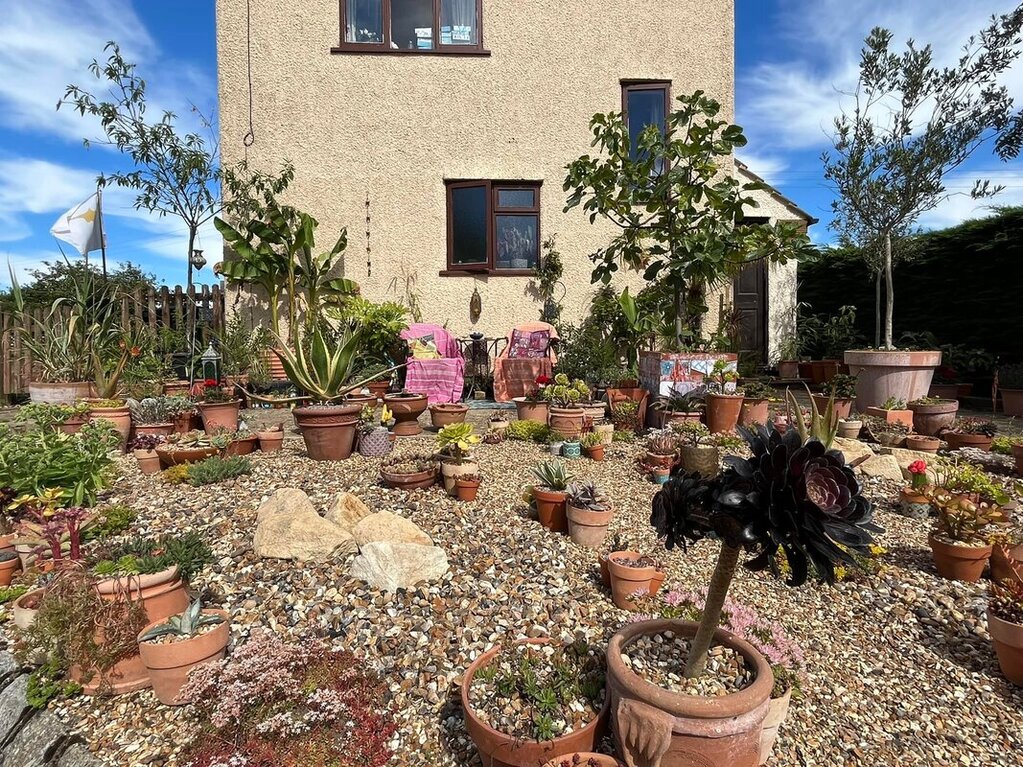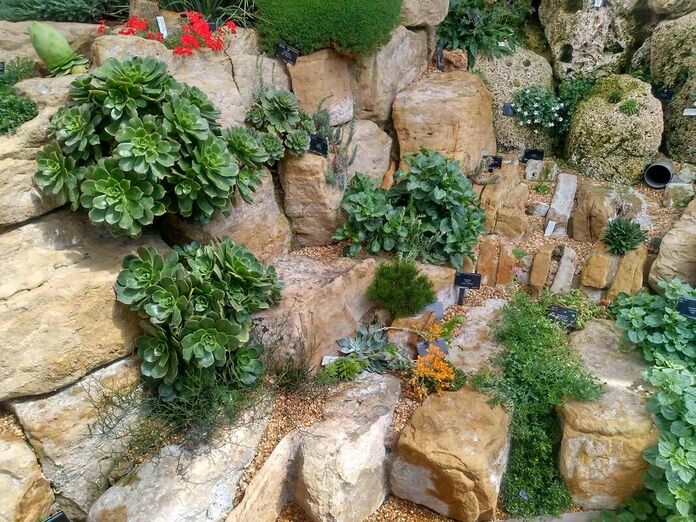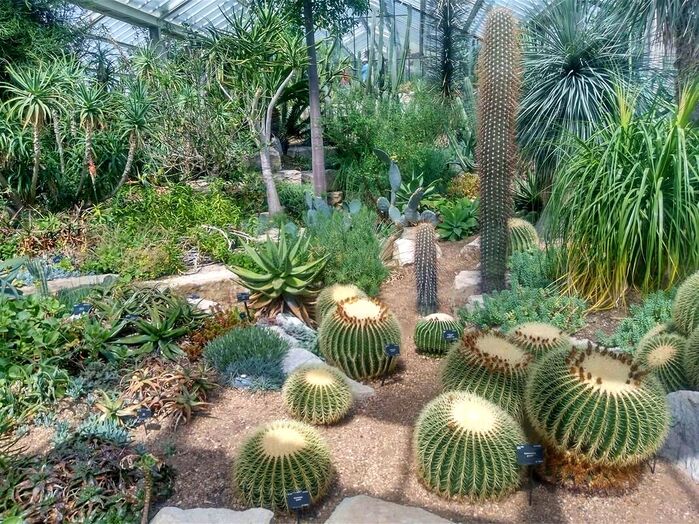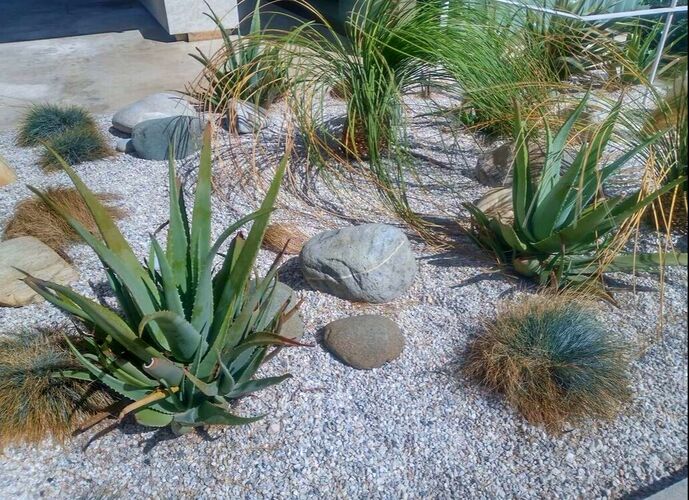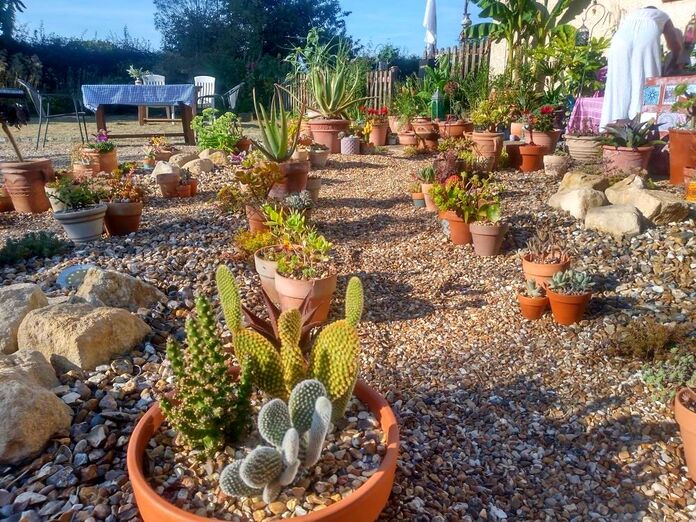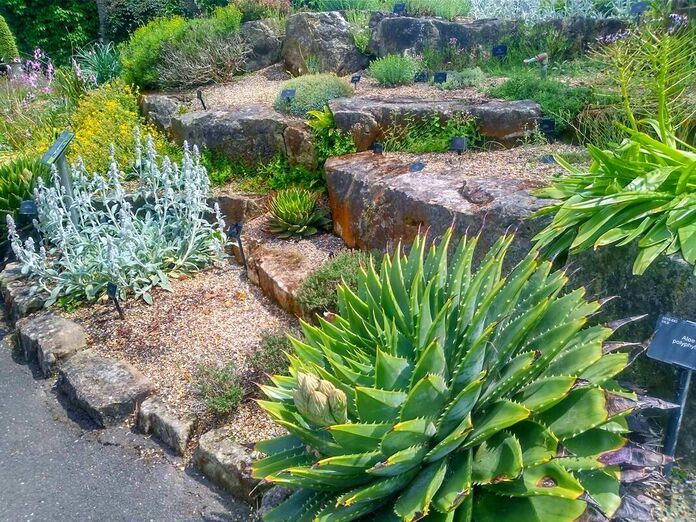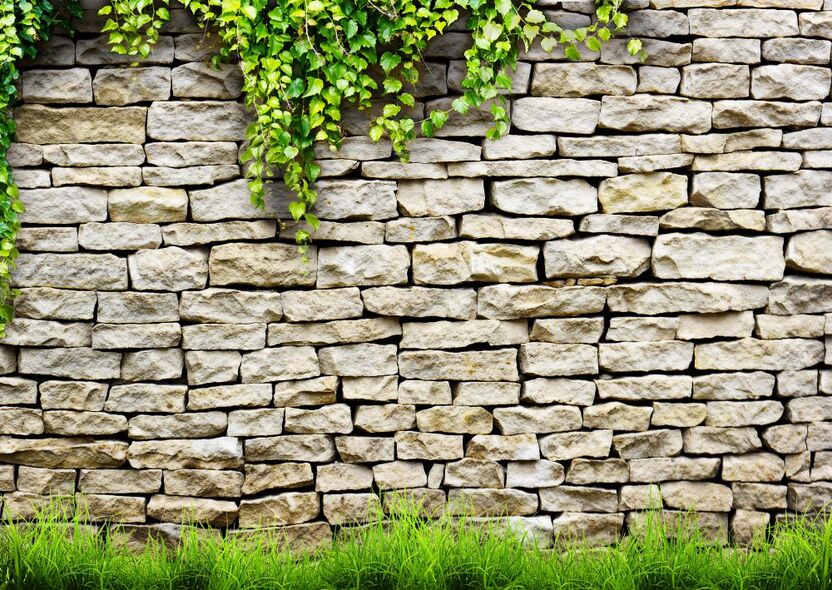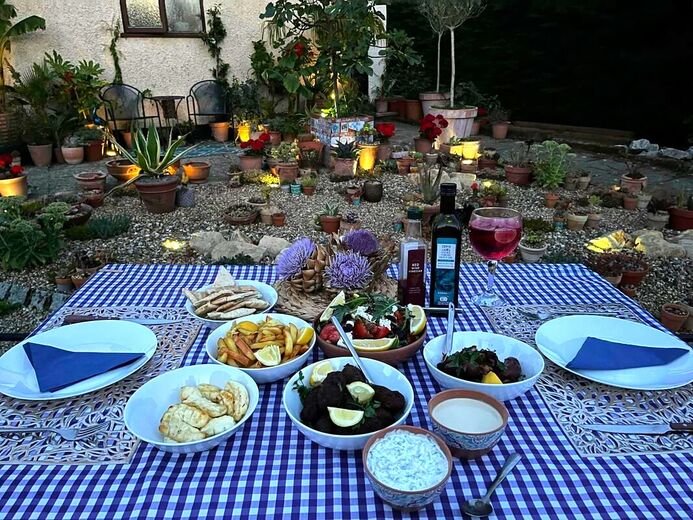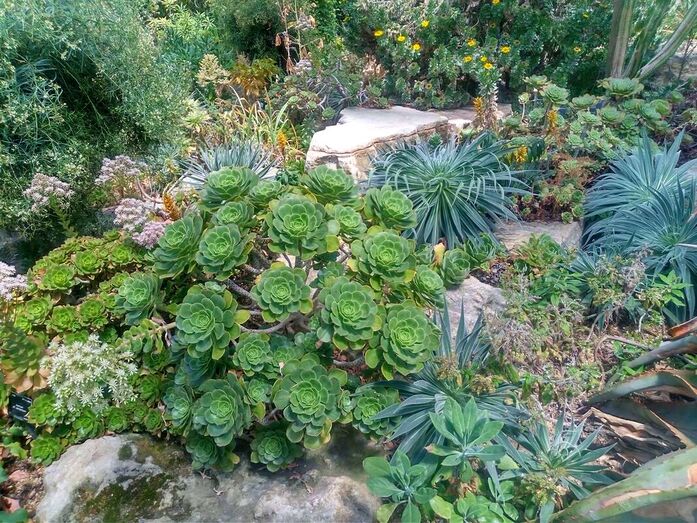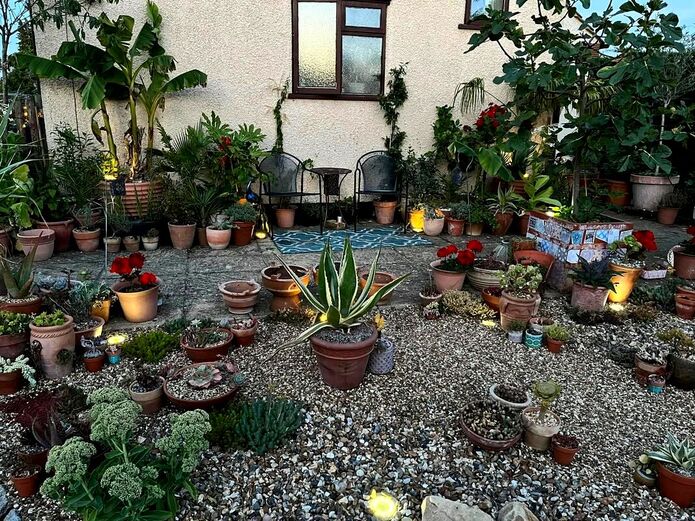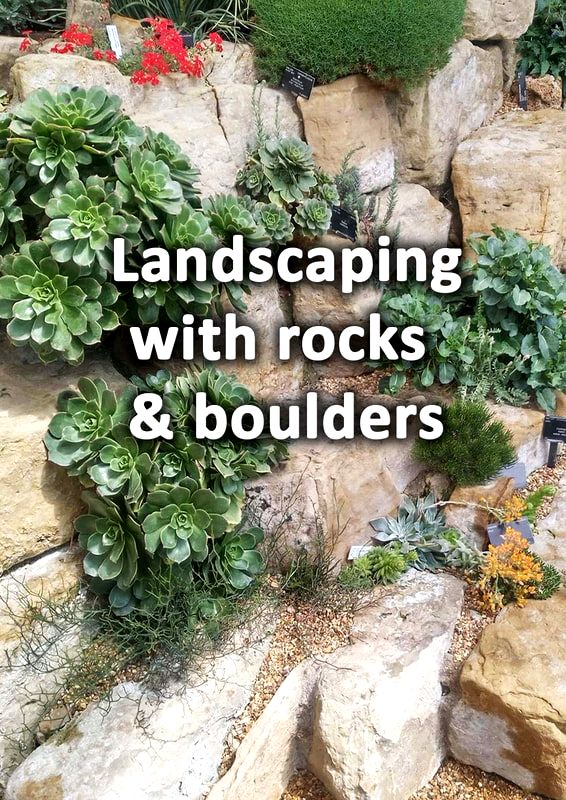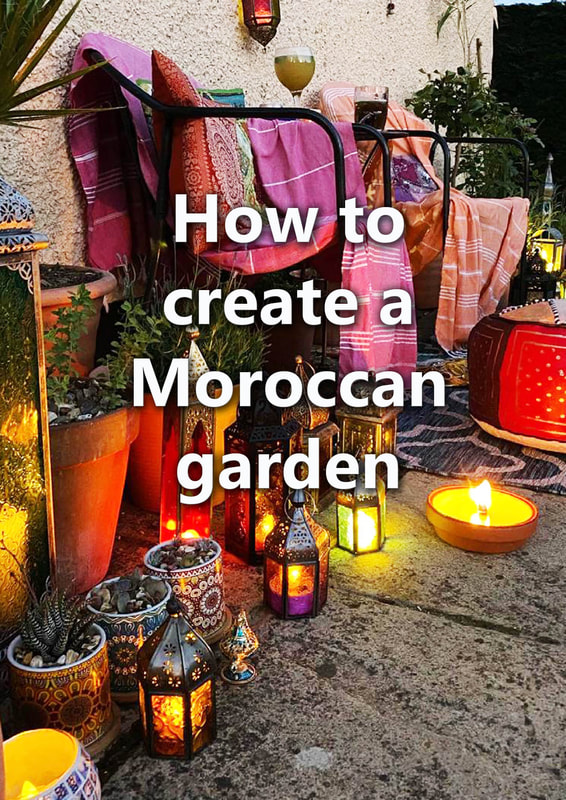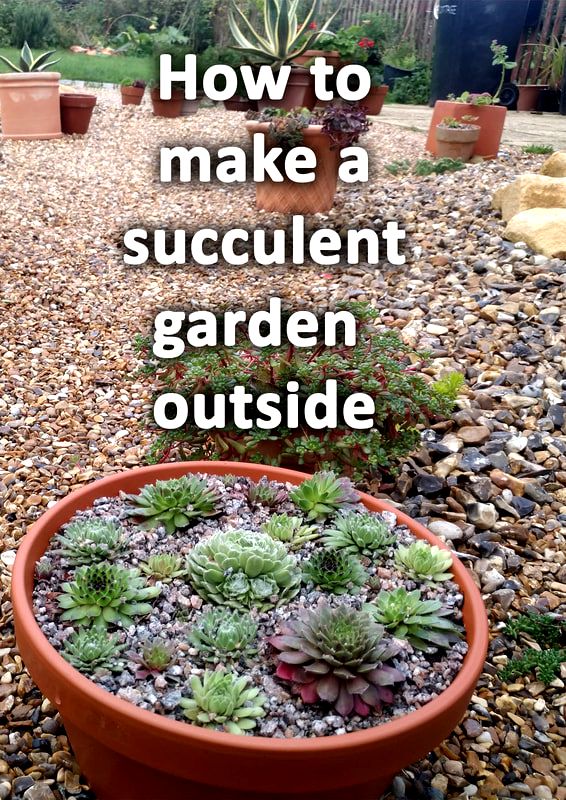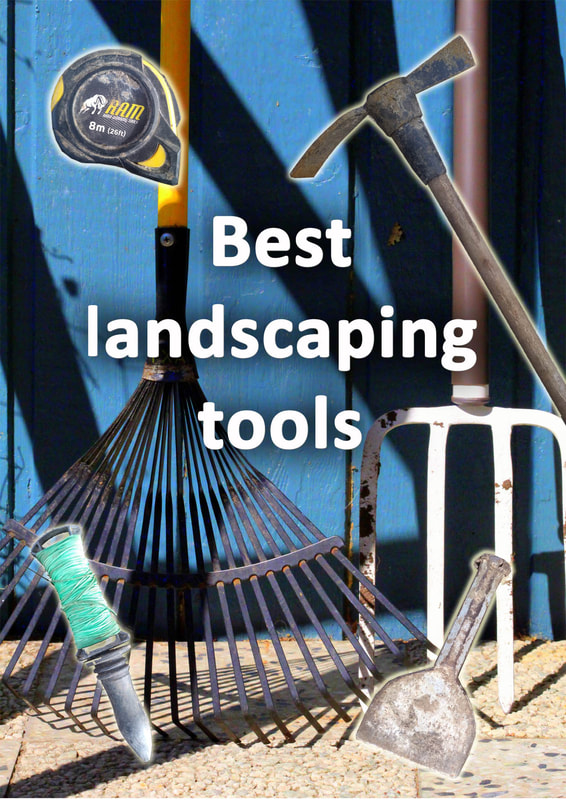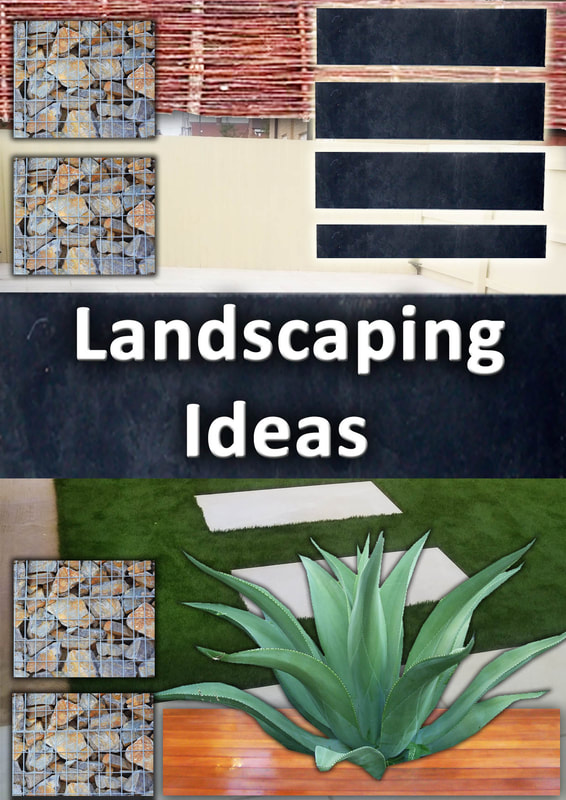|
This article contains affiliate links
Desert gardens are those which replicate the natural aesthetics of dry and arid parts of the world.
These distinct regions are famous for their rocky terrain, sandy gravels and sparse vegetation. Plants adapted for such regions have evolved for low rates of transpiration and moisture loss. This results in leathery skins and much defined, architectural, forms. These characteristics make desert landscaping unique with many interesting shapes, contrasts and textures. An emphasis on rocks and gravels means desert gardens lend themselves to favour low maintenance landscaping. This has great advantages for the busy gardener who would rather admire their garden on days off. Very often, desert gardens provide memory triggers to happy times travelling or family holidays abroad. Consequently, I will describe how to make a desert garden in any climate. I will describe typical desert garden elements and some considerations of desert garden landscaping. How to create a desert landscape
In order to create an effective desert landscape you must firstly choose a well drained, sunny site. If your ground is naturally moist you may need to raise your ground level up with well drained soil. You should surface your desert garden with light coloured gravels to reflect sunlight and boost temperatures. Boulders should be positioned to represent natural rock formations; these are most effective in varying sizes. The plants you plant within your garden will depend on where you live.
If you live within a Mediterranean climate you will have much more planting choice. However if you live in a temperate climate you may need to be more creative.
There are many succulents which can survive cold temperatures. Furthermore there are many plants which have exotic forms but are actually from cold regions. Some of these can be found in our article 50 exotic looking plants which can live in a cold climate here. Enhance microclimates
Not all deserts in nature are hot, some exist in colder regions of the world. However, most seeking to create a desert garden are seeking to replicate a warmer desert. Consequently, it is important for your desert garden to feel as warm as possible! This is why selecting the right site for your desert garden is extremely important. You will want to sit back and enjoy your masterpiece during hot, summer, days! Therefore, the best location for a desert garden is against a south facing wall.
An ideal scenario would be a desert garden which surrounds a south facing patio. Such an arrangement will reflect and capture the sun’s heat energy.
This will create a warm, convection, current of forming the perfect micro-climate. Creating microclimates in this way can bring some real authenticity to desert garden design. You will be able to extend your season and grow more exotic plants with such micro-climates. Provide shelter
If you have to create your desert garden in a more exposed location it is advised to add shelter. This is particularly the case if you live in a colder climate. Even though deserts around the world can be very exposed and windswept desert gardens are best sheltered. This is because you want your garden to be comfortable for both plants and people. You will wish to maximise the effects of microclimate as much as possible. To provide more shelter you can build high structures around your garden. These can be walls, raised beds, screens and fences. On a larger scale you can also grade landform to provide some shelter to your desert garden. Soil
Desert garden soil will need to be well drained and not retain too much moisture. As in natural, desert, environments moisture levels should be kept to a minimum. This will reduce surface evaporation which could reduce the gardens climatic temperature. Well drained soil will also make your desert garden more favourable to desert and arid loving plants. The soil PH of deserts also tends to be more alkaline than acid. Make sure you mix in plenty of free draining materials such as grit to your topsoil. Installing drainage
If your existing garden has naturally wet soil you may wish to consider installing drainage. This will normally involve excavating free draining, drainage channels and a soak-away. You may also require a free draining soil layer installed just under the surface. For more information on how to drain your garden visit our comprehensive article here. If you are interested in our drainage surfaces pleasecontact us here. Gravels
As most deserts around the world have sandy, gravelly, soils it makes sense to surface desert gardens with gravels. The best gravels for desert gardens are those graded at 10mm or lower with light and natural tones. The gravel should be non-calcareous and impervious to water penetration. This will prevent algae blooms and gravel breaking down over time. Spreading a 40mm depth of gravel over a weed membrane will ensure a low maintenance and weed free surface. During sunny days gravels will heat up in sunlight contributing to a warmer microclimate. Rocks
Rocks can really add some authenticity and drama to a desert garden design. It is often a good idea to source rocks that have light and warm colours. This helps to exacerbate a feeling of warmth and heat. Try to also source rocks which do not vary too much in tone from your gravel. This will make the garden look more natural and believable. Rocks and boulders in varying sizes will also add to the authenticity of the desert landscaping. Dry stone walls
Dry stone walls can be a great way to further enhance a desert garden design. The stonework can add to the gardens rustic feel and provide extra rocky surfaces to the design. Dry stone walls are the perfect way to add more enclosure and boost microclimate. This is because the stonework reflects the suns light and heats up in the sun. Stone walls can also provide well drained raised beds, perfect for desert garden plants. Rock walls also provide the opportunity to plant succulents and air plants within the vertical structure. Extend seating areas
Desert gardens are a great way to extend seating areas such as patios. This is because they can actually help boost a patios microclimate and aesthetics. A great way to combine patios and desert gardens is to allow the two spaces to merge. Paving can slowly deconstruct around the edges slowly mixing into gravel areas. The desert landscaping can make the perfect visual display for your guests during warm summer parties. Planting a desert garden
The most important part of planting a desert garden is selecting the right plant species. This will completely depend upon the regional climate of where you live. Make sure you buy your plants from a reputable supplier who provide details of their climatic tolerances. Some of the best plants for desert gardens are cacti and succulents. Generally succulents are much more tolerant of cold conditions than cacti but it depends. If you live within a northern, temperate, region you may want to consider overwintering them. This is where you take potted plants inside during the winter. When the summer arrives the pot can be lowered into a planting hole and backfilled with gravel. Lighting
If you really want to get the best out of your desert garden it is a great idea to install lighting. Up-lighters and spike lights can really help to illuminate rocks and architectural plants at night. Different coloured lighting can add even more interest to features such as dry stone walls and palm trees. An effective strategy is to combine both patio and desert garden lighting schemes. This allows your guests to appreciate your desert landscaping when the night draws in. If you do not have the budget to install outdoor cabling fear not! Many solar lights are now good enough to provide a reasonable night time display for desert gardens.
Thank you for reading our article on how to create a desert garden. If you require desert garden services including design, planting or landscaping do not hesitate to contact us!
'As an Amazon associate I earn from qualifying purchases'
0 Comments
Leave a Reply. |
The Author
|
Landscaping services across Buckinghamshire, Amersham, Aylesbury & High Wycombe
Hyde Heath, Amersham, Buckinghamshire |
|

